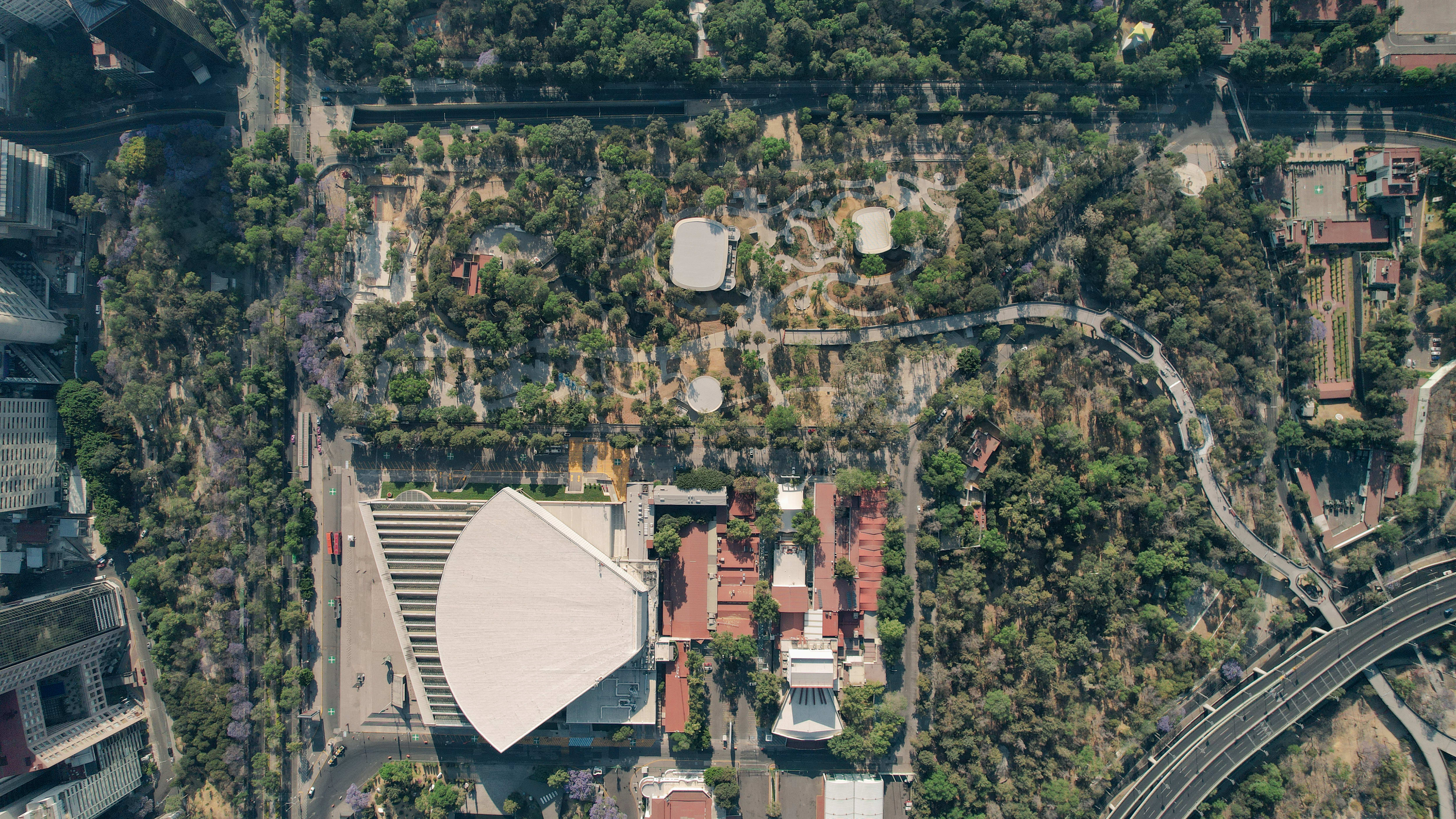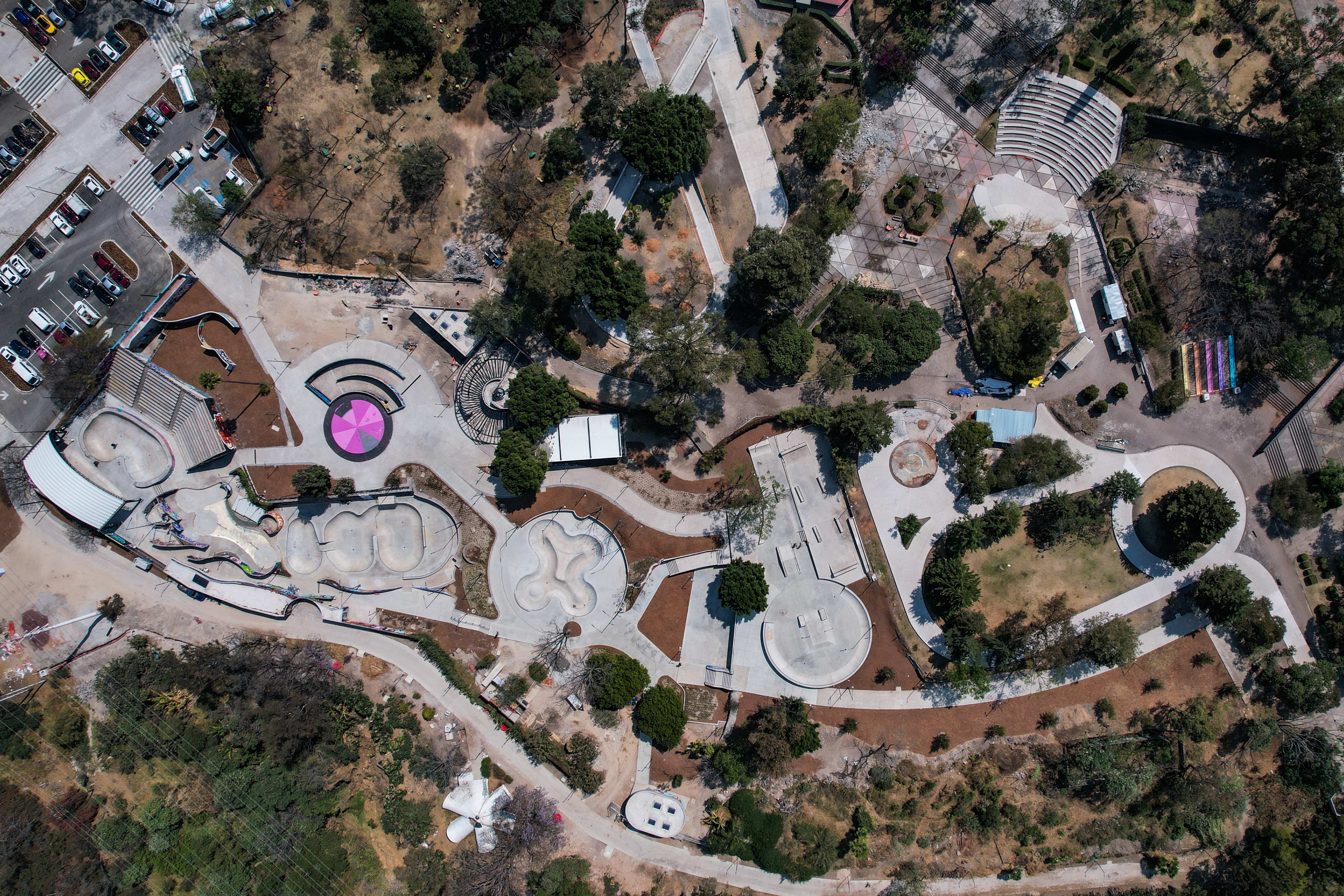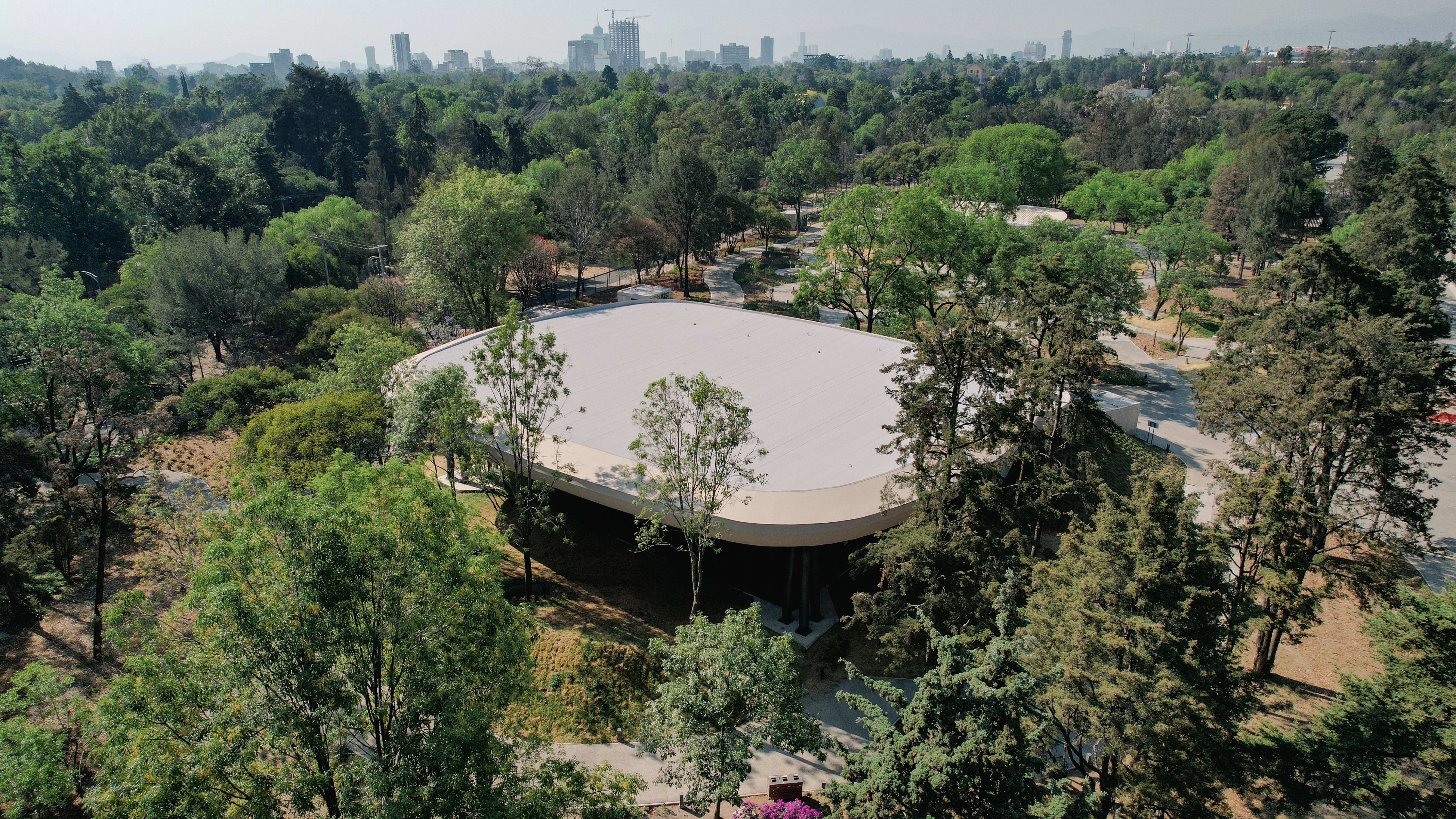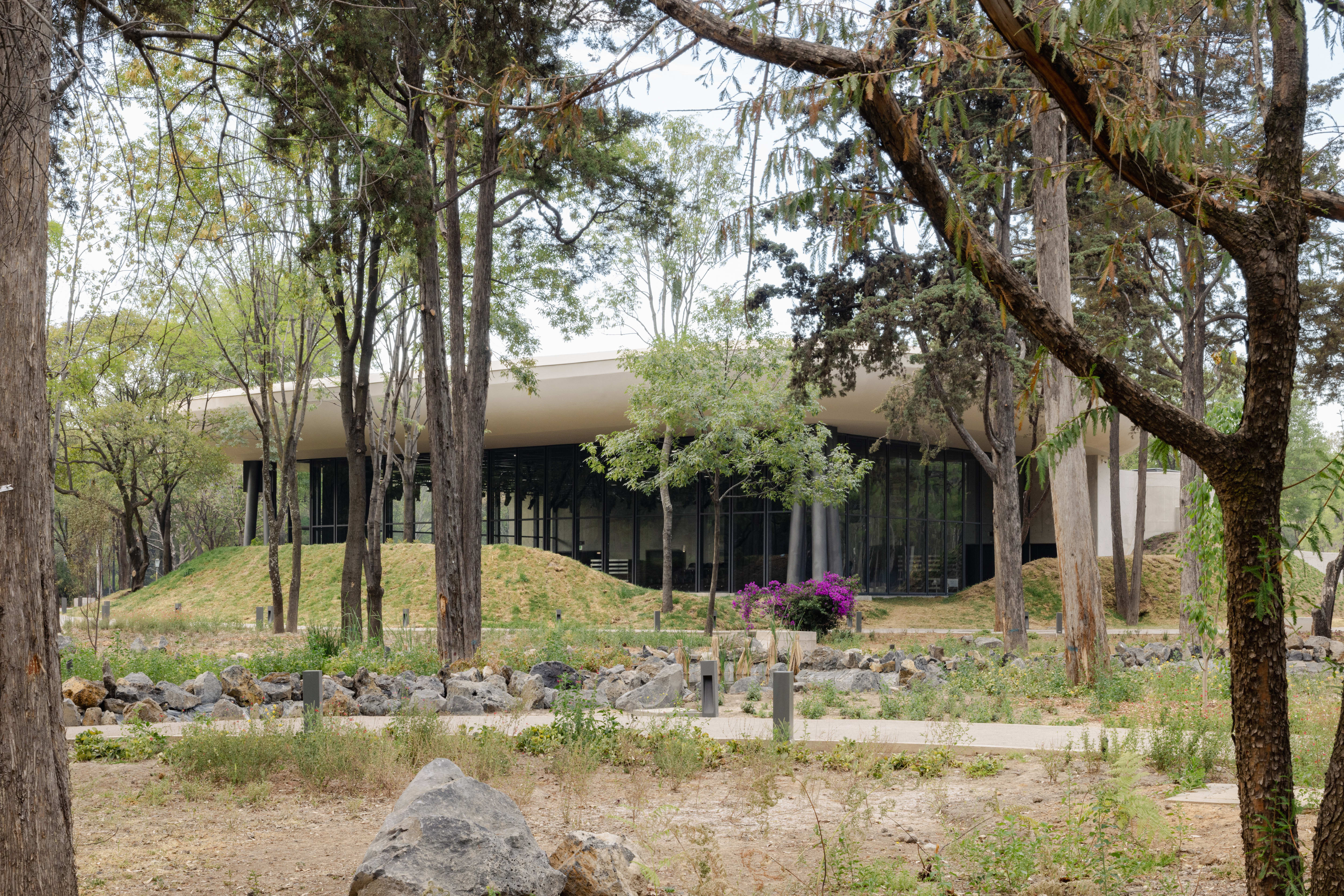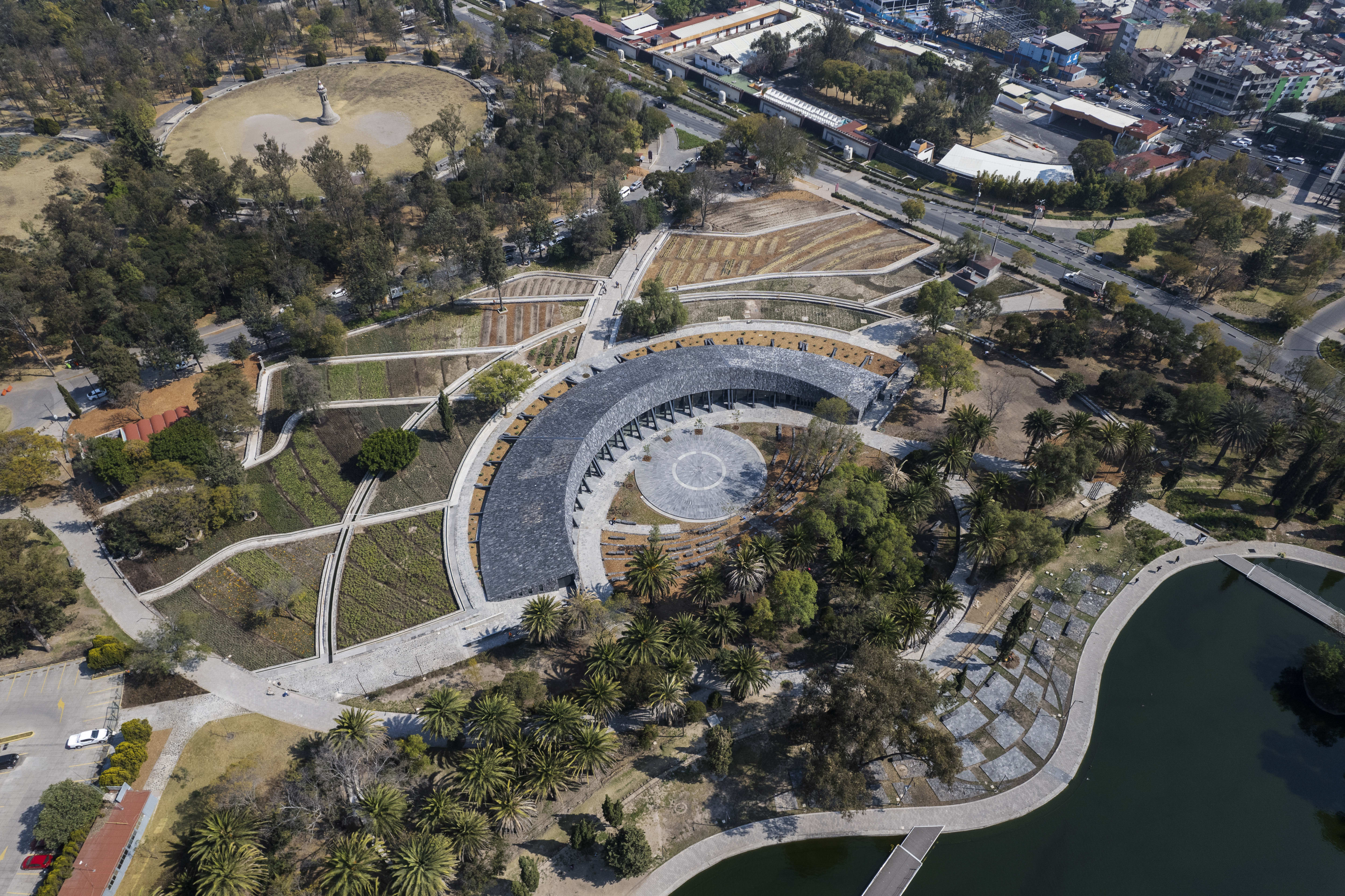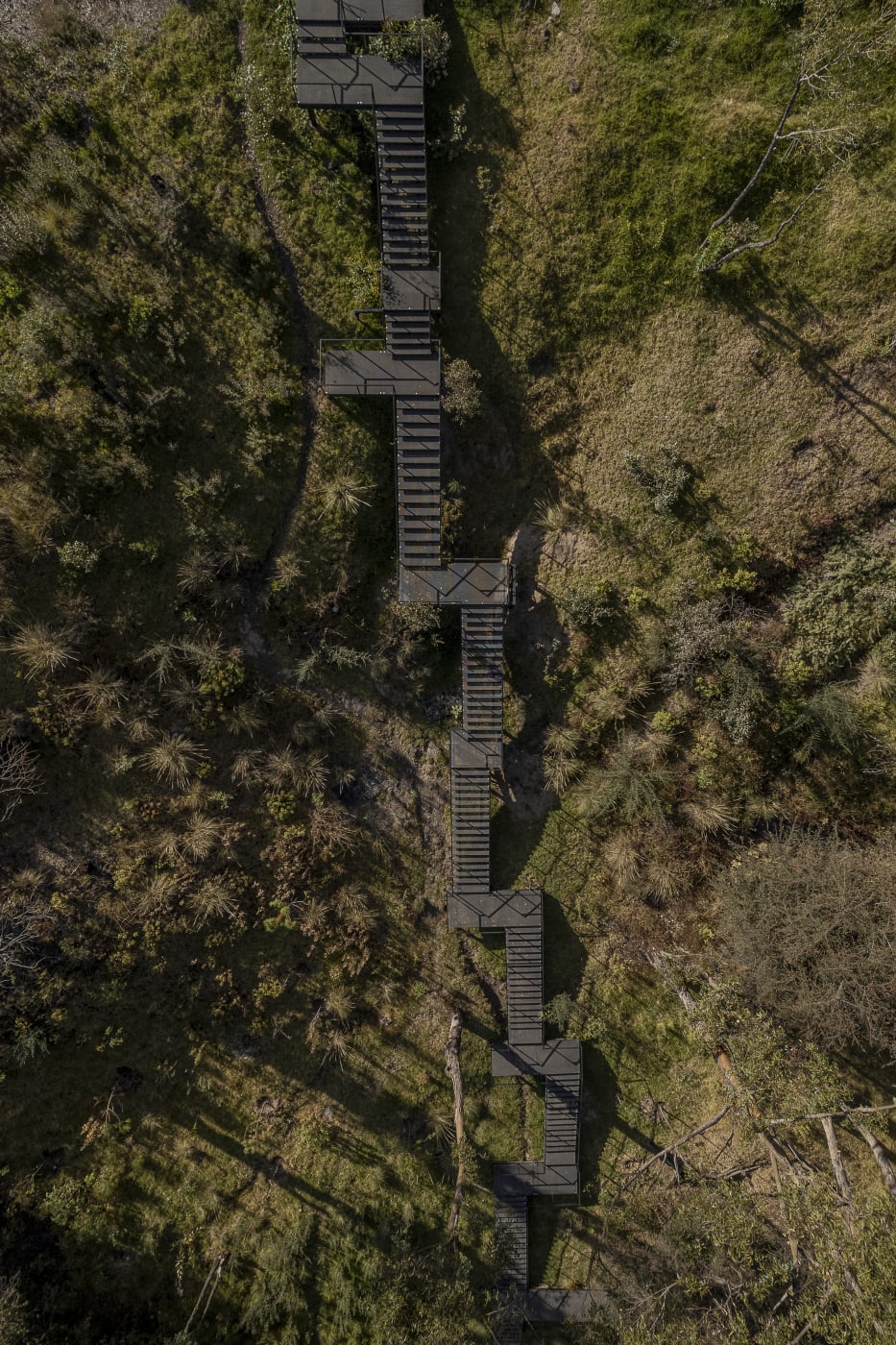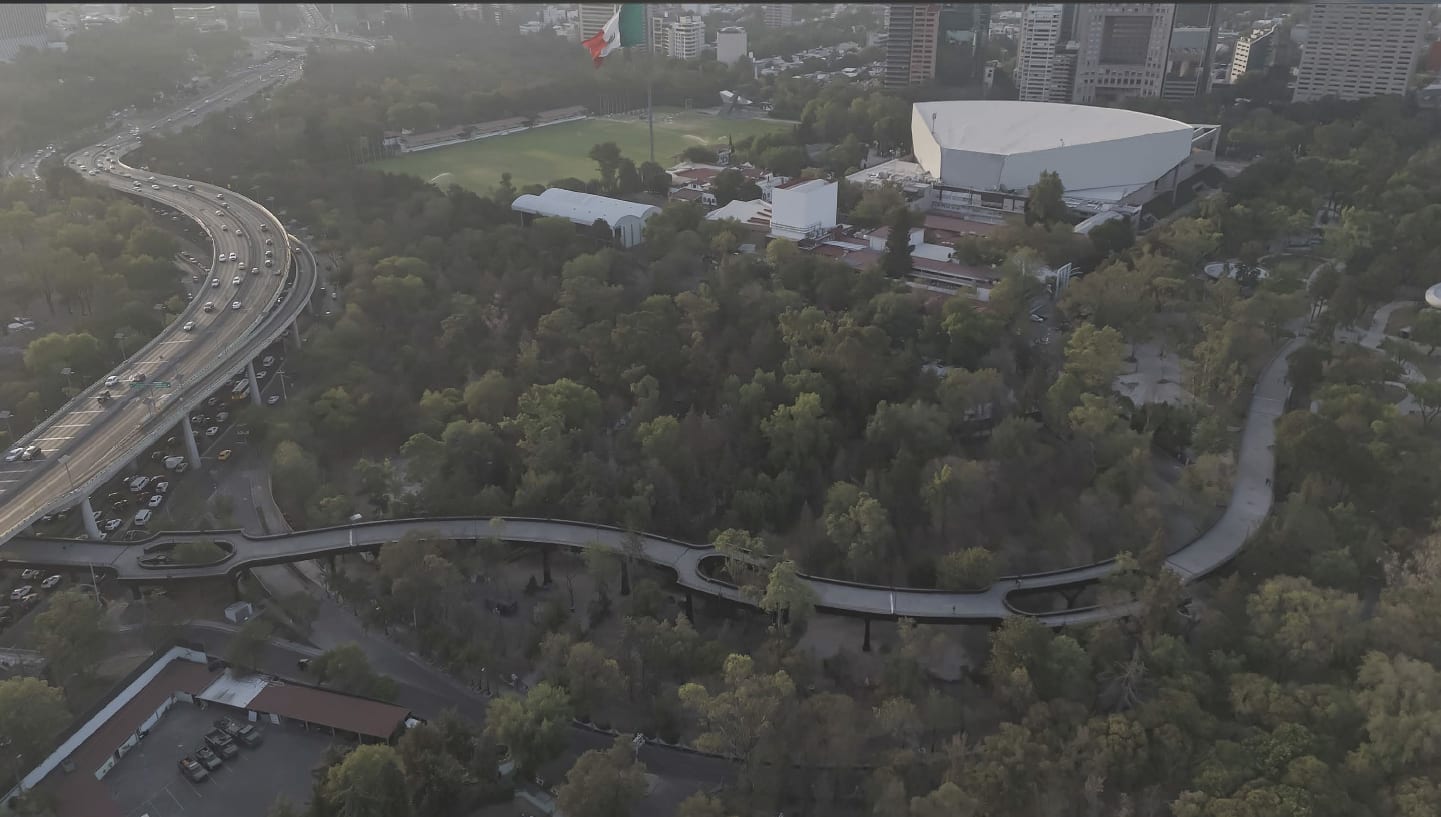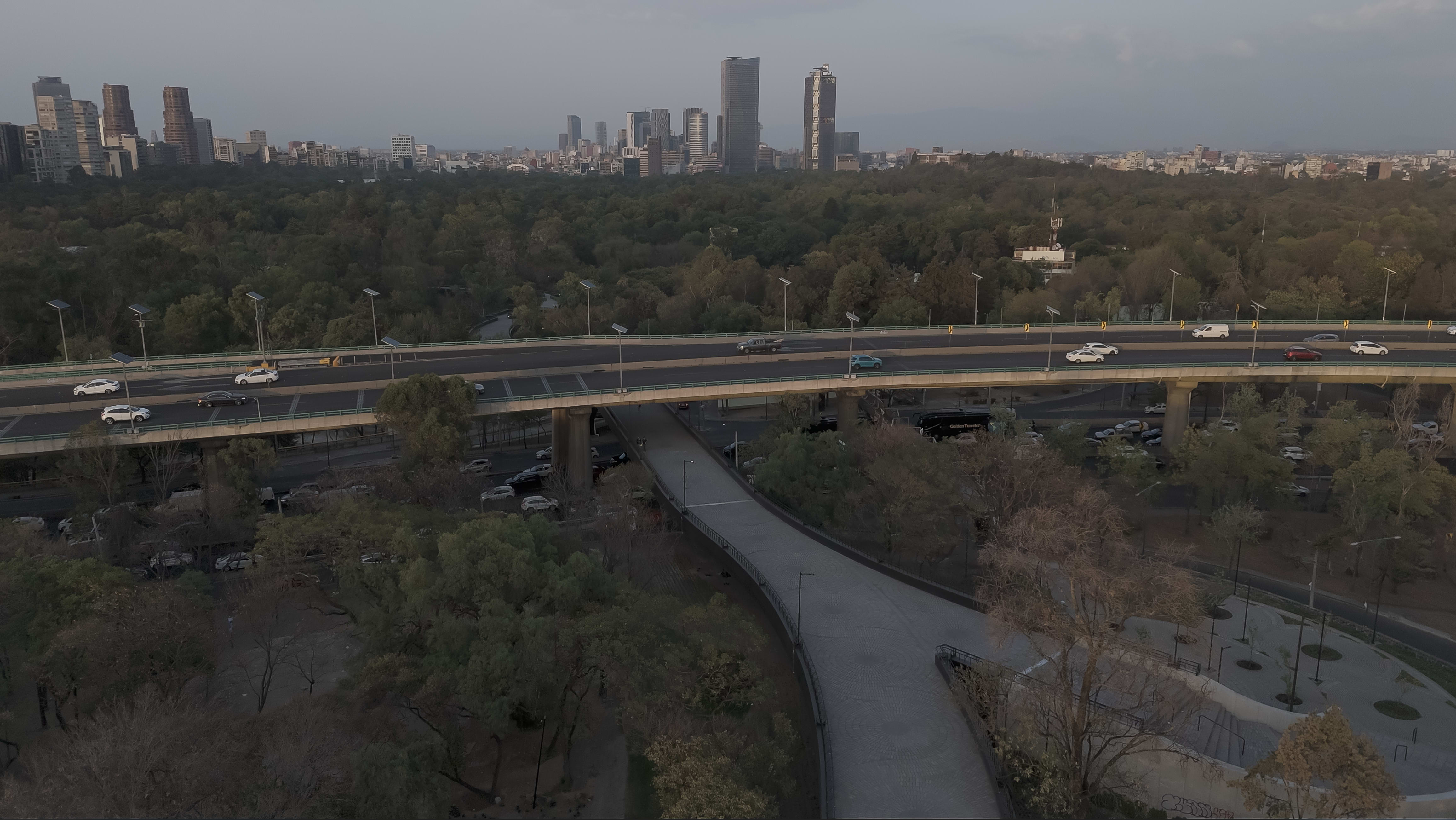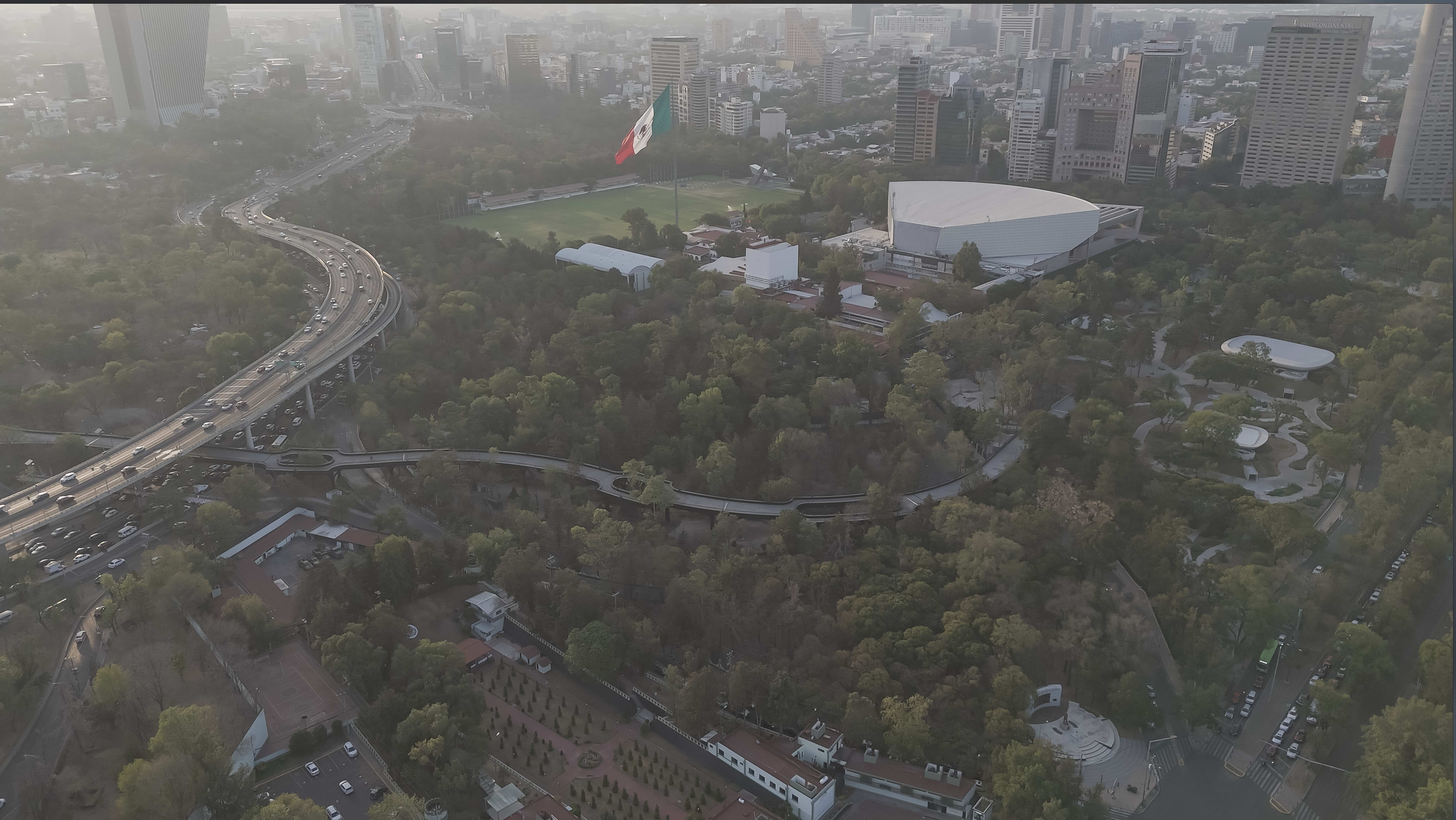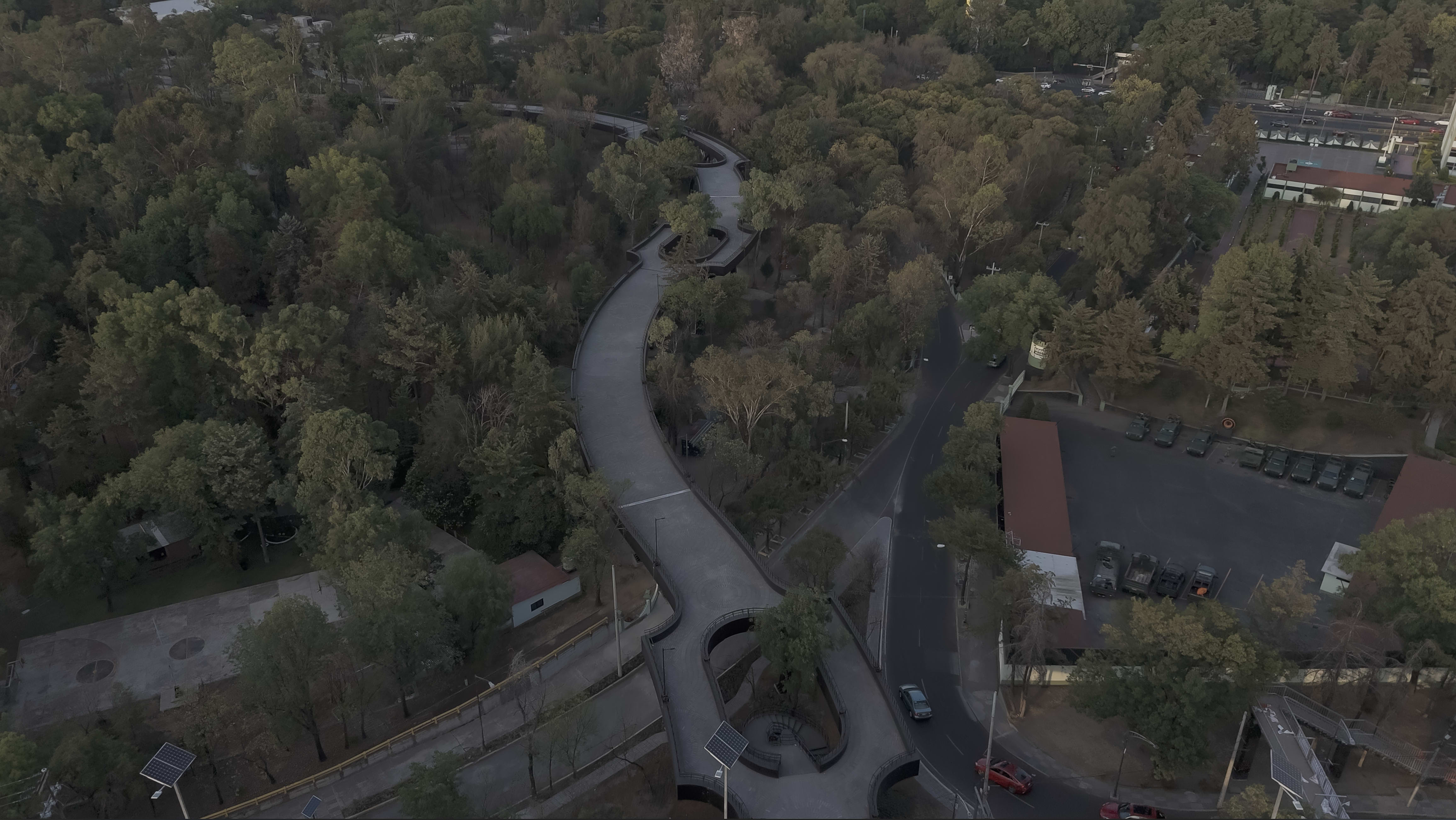Located in the heart of Mexico City, Chapultepec Forest is one of the most iconic urban parks in Latin America. Its origins date back to pre-colonial times, and over the course of five centuries it has been the scenario of key moments in Mexico’s history. Today it not only functions as a gigantic green lung, but also houses recreational and cultural spaces of great relevance such as the National Museum of Anthropology, the Chapultepec Castle, and the Cárcamo de Dolores, just to mention a few. Every year it receives more than 20 million visitors from Mexico and the whole world.
In early 2019, after making the decision to convert a military base occupying 100 acres into a public park which would be part of Chapultepec, Mexican President Andrés Manuel López Obrador invited Gabriel Orozco to conceive a Master Plan for the Chapultepec Forest. Over the past five years, Orozco has worked with numerous national and international experts in environmental restoration, urban infrastructure, history, archaeology and other specialties on this project.
The Master Plan, as developed by Gabriel Orozco, sought to generate a Bio-Cultural Forest in Chapultepec and was governed by the principles of permaculture, which are: caring for the land, caring for people, and fair sharing. According to these principles, the project proved to be ecologically respectful, socially responsible and economically viable. The Plan reaffirmed Chapultepec’s original vocation as a spring and public forest, substantially enriching all its strata; it multiplied its environmental potential, strengthening and increasing its green areas; and it doubled its cultural offerings, diversifying its public spaces.
